 "Rusty Vandura - www.tinyurl.com/keepoppo" (rustyvandura)
"Rusty Vandura - www.tinyurl.com/keepoppo" (rustyvandura)
01/28/2020 at 15:18 • Filed to: None
 1
1
 28
28
 "Rusty Vandura - www.tinyurl.com/keepoppo" (rustyvandura)
"Rusty Vandura - www.tinyurl.com/keepoppo" (rustyvandura)
01/28/2020 at 15:18 • Filed to: None |  1 1
|  28 28 |
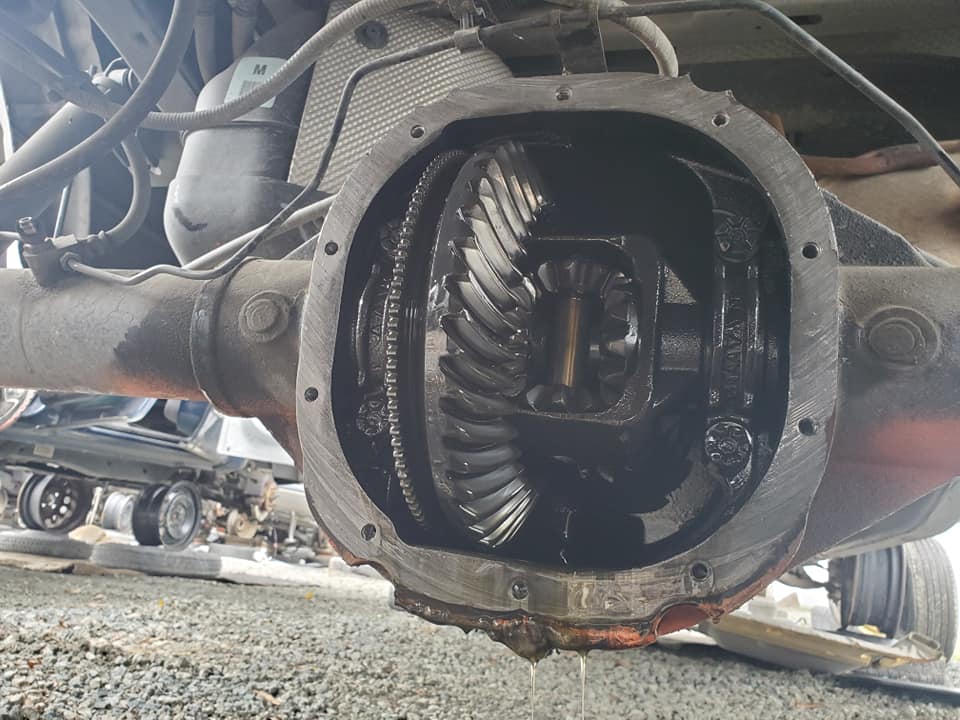
Don’t you need to have more bits there in the middle for this to be a closed diff?
 dogisbadob
> Rusty Vandura - www.tinyurl.com/keepoppo
dogisbadob
> Rusty Vandura - www.tinyurl.com/keepoppo
01/28/2020 at 15:22 |
|
just a cover ;)
 TheTurbochargedSquirrel
> Rusty Vandura - www.tinyurl.com/keepoppo
TheTurbochargedSquirrel
> Rusty Vandura - www.tinyurl.com/keepoppo
01/28/2020 at 15:29 |
|
Certainly looks open to me. The center of the diff will have more complicated bits (clutch packs or Torsen gear structures) if it was an LSD
 Rusty Vandura - www.tinyurl.com/keepoppo
> TheTurbochargedSquirrel
Rusty Vandura - www.tinyurl.com/keepoppo
> TheTurbochargedSquirrel
01/28/2020 at 15:31 |
|
My thinking.
 and 100 more
> Rusty Vandura - www.tinyurl.com/keepoppo
and 100 more
> Rusty Vandura - www.tinyurl.com/keepoppo
01/28/2020 at 15:40 |
|
No, just put the cover back on. BOOM! now it’s closed.
 HammerheadFistpunch
> Rusty Vandura - www.tinyurl.com/keepoppo
HammerheadFistpunch
> Rusty Vandura - www.tinyurl.com/keepoppo
01/28/2020 at 15:42 |
|
yeah, thats open. What is that? its got the speed ring on the gear ring.
 RamblinRover Luxury-Yacht
> Rusty Vandura - www.tinyurl.com/keepoppo
RamblinRover Luxury-Yacht
> Rusty Vandura - www.tinyurl.com/keepoppo
01/28/2020 at 15:49 |
|
Don’t you need to have more bits there in the middle for this to be a closed diff?
In theory, “no”, there can be a clutch pack up inside the carrier aligned to the ring gear on one spider only. As an example, very, very early Ford 9" were this way, I think. Can’t remember my ‘62 service manual too well . In practice, “yes”, because nobody does single clutch packs tensioned purely off spider thrust since the 60s of which I’m aware.
Ford 9" (relatively early, but with a fully developed system - not purely a clutched spider):
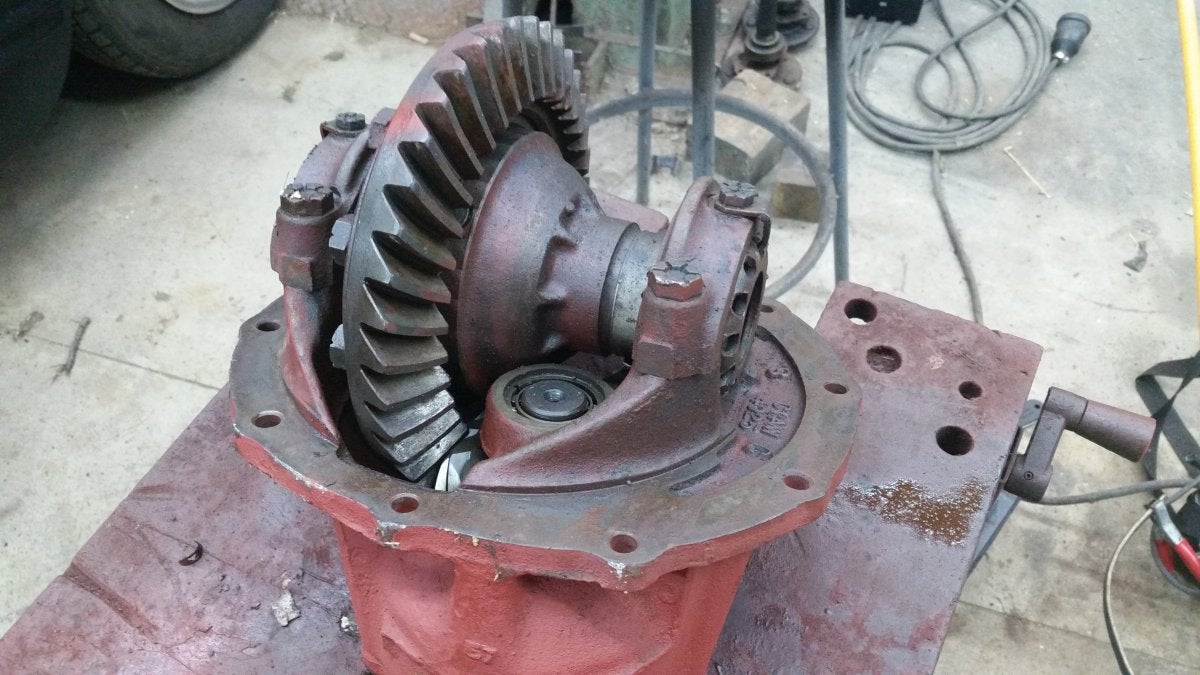
Sometimes the extra parts aren’t many, but they’re still there.
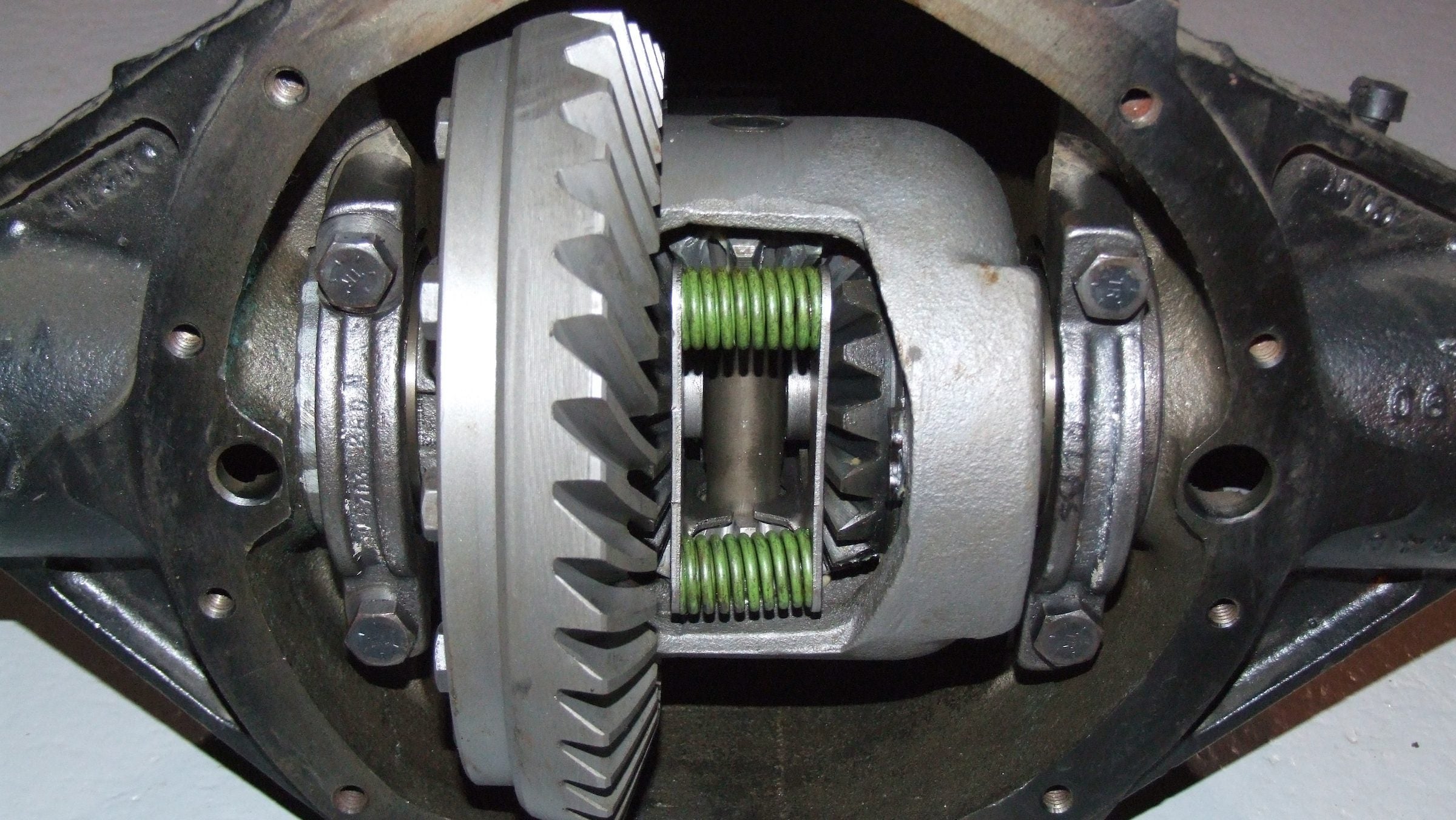
 Aremmes
> Rusty Vandura - www.tinyurl.com/keepoppo
Aremmes
> Rusty Vandura - www.tinyurl.com/keepoppo
01/28/2020 at 15:56 |
|
Just needs a few spot welds to make it a closed diff, but make sure to pick the right spots.
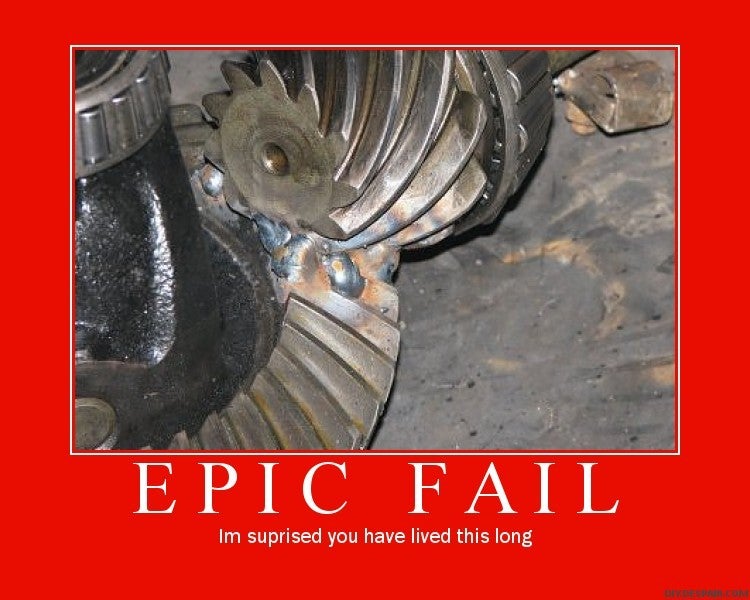
 Rusty Vandura - www.tinyurl.com/keepoppo
> RamblinRover Luxury-Yacht
Rusty Vandura - www.tinyurl.com/keepoppo
> RamblinRover Luxury-Yacht
01/28/2020 at 16:08 |
|
I was thinking of something like this, that the other did not look like.
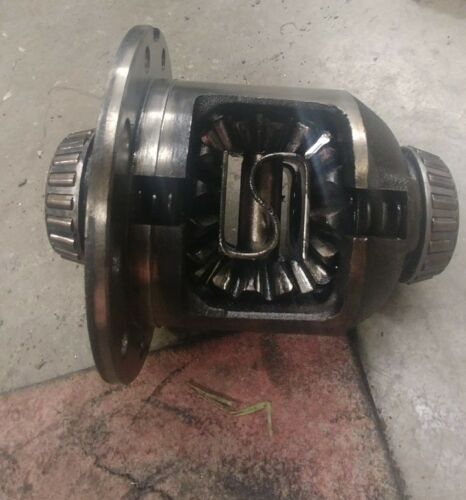
 Rusty Vandura - www.tinyurl.com/keepoppo
> Aremmes
Rusty Vandura - www.tinyurl.com/keepoppo
> Aremmes
01/28/2020 at 16:11 |
|
Surely, someone jests.
 nFamousCJ - Keeper of Stringbean, Gengars and a Deezul
> Rusty Vandura - www.tinyurl.com/keepoppo
nFamousCJ - Keeper of Stringbean, Gengars and a Deezul
> Rusty Vandura - www.tinyurl.com/keepoppo
01/28/2020 at 16:30 |
|
Needs a cover. Then it'll be nice and closed.
 RamblinRover Luxury-Yacht
> Rusty Vandura - www.tinyurl.com/keepoppo
RamblinRover Luxury-Yacht
> Rusty Vandura - www.tinyurl.com/keepoppo
01/28/2020 at 16:31 |
|
The most common LSDs out there utilize a clutch pack behind the axle-splined spider gears, one way or another. Most have some mechanism for preload of the spiders so they start off slightly in friction, but can be coaxed to slip. As you’re probably aware, gears driving against one another experience a separating force - every action has an equal and opposite reaction:
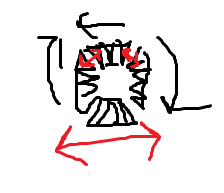
Therefore, when one is pressing the spider gears to the left and right axle apart this way (when one wheel is spinning), it puts pressure on clutch plates behind the gears.
---------------------------------------------------------
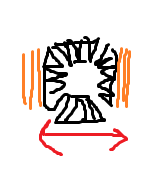
This is the easy way to do it.
————————————————————————————-
It would be possible to do this:
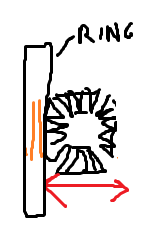
But then you have no preload and poor surface area for clutches, and a recipe for uneven spider wear.
There are also much fancier ways to do this - the PowRLok used by Jaguar and built for them by Spicer actually uses mechanical forcing cams on the intermediate spider shafts so that the increase in force is much more dramatic.
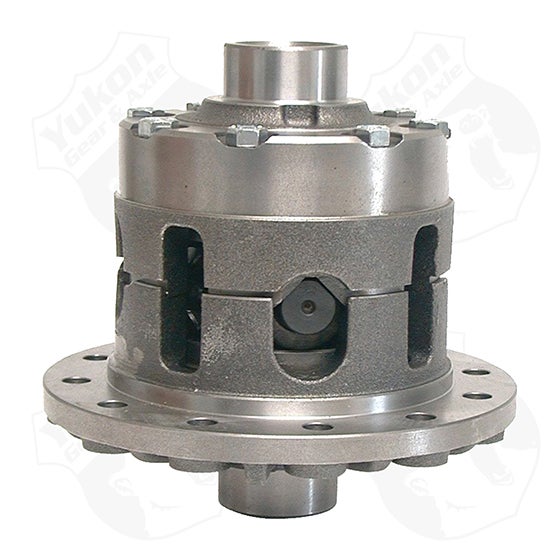
However, more to the point, the locking one as you posted has visible clutches and preload spring.
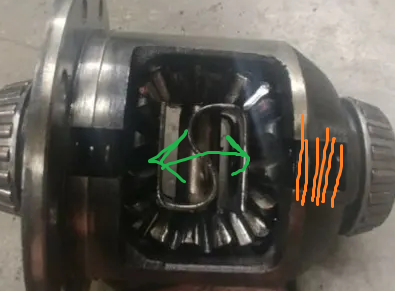
The one on the Vic has no space for clutches and no preload. Therefore...
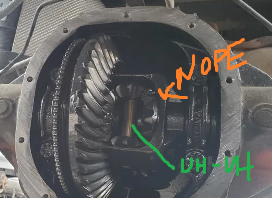
 Gone
> HammerheadFistpunch
Gone
> HammerheadFistpunch
01/28/2020 at 16:43 |
|
It’s a Ford 8.8. Assume an F-150.
 Ash78, voting early and often
> Rusty Vandura - www.tinyurl.com/keepoppo
Ash78, voting early and often
> Rusty Vandura - www.tinyurl.com/keepoppo
01/28/2020 at 16:43 |
|
I think if I was an engineer, I would have looked at this 100 years ago and said “F that, we need better batteries and a motor at each wheel.”
Because laziness really does drive innovation. Diffs are voodoo magic.
 Rusty Vandura - www.tinyurl.com/keepoppo
> RamblinRover Luxury-Yacht
Rusty Vandura - www.tinyurl.com/keepoppo
> RamblinRover Luxury-Yacht
01/28/2020 at 16:58 |
|
So the spring, or preload , holds the gear in place for normal driving, but when there is spinning or slippage, the inner gear slides out a bit from where it wants to be seated and backs up against a clutch?
 Rusty Vandura - www.tinyurl.com/keepoppo
> Ash78, voting early and often
Rusty Vandura - www.tinyurl.com/keepoppo
> Ash78, voting early and often
01/28/2020 at 17:08 |
|
Voodoo. Magic. And wondrous.
 Aremmes
> Rusty Vandura - www.tinyurl.com/keepoppo
Aremmes
> Rusty Vandura - www.tinyurl.com/keepoppo
01/28/2020 at 17:15 |
|
I am serious, and don't call me Shirley.
 RamblinRover Luxury-Yacht
> Rusty Vandura - www.tinyurl.com/keepoppo
RamblinRover Luxury-Yacht
> Rusty Vandura - www.tinyurl.com/keepoppo
01/28/2020 at 18:44 |
|
When there is spinning or slippage, the gears at the sides move away from each other due to the fact that one is trying to force an effect on the other and the carrier. The carrier pushes the center (“top” and “bottom”) spider gears against the side gears -if one wheel begins to slip, it must accelerate for the system to maintain the same overall speed, and the opposite must decelerate, which means force is being applied; it’s very similar to if you had the car in park and tried to turn one wheel forward or back - you’d watch the opposite side react oppositely. The spider gears have to transmit force, and transmitting force pushes them apart, just like any gear train that has ever existed. The thrust force on the gears provides a pressure which is not used in an open diff, but with an LSD increases pressure on the clutches.
Assume for a moment you’re winding an old eggbeater. You ought to be able to feel the pressure in the frame as the little spur gears try to force themselves away from the drive gear.
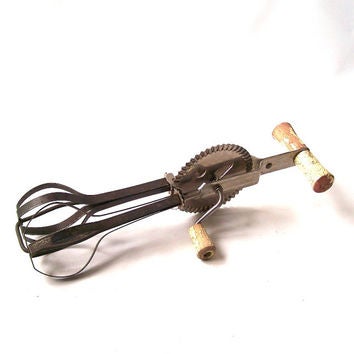
Now imagine that the pressure is being used to tighten something, like a brake. Or, s
ay, there’s a rusty spot on one of the shafts and the pressure in the frame causes it to flex and tighten up, causing
friction there and locking
up the beater. The harder you wind, the more resistance you get, because the pressure at the rust spot is increasing. A tiny amount of movement, but a substantial amount of reactive force, is causing friction to happen.
This is more or less the idea behind a clutch LSD.
—————————————————————-
The preload spring provides a little bit of holding pressure against the spider gea
rs
, holding them
to the clutches
, so that even when they are
not under thrust from one wheel or other turning at a different rate
, and even if the spider gears are worn, there is some friction causing the spider gear to cling to the carrier. This provides a discouragement to the wheels breaking loose at all in a momentary slip, since it has to break loose initially - then, if continuing to spin, it will increase the pressure on the clutches.
When one wheel spins, it forces both axle-side spider gears apart, and against the clutches that lock them to the carrier.
These are not clutches like the one behind the transmission - these are “apply pressure to apply” clutches, not rigged so that one applies pressure to something to release them. The tighter these become, the more friction they transfer.
One would call it a preloading spring because it provides an initial minimum amount of force against the clutches which they wouldn’t have otherwise. There are many cases where one wants to enforce a minimum in a mechanical system this way.
Compare to a suspension spring having a preload
amount
- if a car weighs 600lb at a corner, the k-value of the spring system is an effective 400lb per inch, and the spring is preloaded 1/2" in compression by the strut having a maximum length, the suspension will only change in height 1" when loaded instead of 1 1/2"... but when a bump is hit, imposing a momentary 400lb additional force, the suspension can travel a whole inch to soak it.
The comparable option, no preload, leaves you with either much greater suspension travel (for same “k”) or much harsher bumps (higher “k”, same suspension sag under load).
When the car goes around a corner, with the soft springs more heavily preloaded, it will roll less (and the inside wheel won’t extend as far)
, but the car can still tolerate harsh bumps
. This was a major factor of the suspension design of the Ford Falcon,
advertised as a small car with big car ride quality; a very high preload on the front suspension.
 Rusty Vandura - www.tinyurl.com/keepoppo
> RamblinRover Luxury-Yacht
Rusty Vandura - www.tinyurl.com/keepoppo
> RamblinRover Luxury-Yacht
01/28/2020 at 19:03 |
|
Woah. That was above and beyond the call of duty to explain all of that.
 MM54
> Rusty Vandura - www.tinyurl.com/keepoppo
MM54
> Rusty Vandura - www.tinyurl.com/keepoppo
01/28/2020 at 20:14 |
|
That is an open diff, for your p71 you’ll be able to identify limited slip by the S-shaped spring in the middle, between the spider gears
 MM54
> Rusty Vandura - www.tinyurl.com/keepoppo
MM54
> Rusty Vandura - www.tinyurl.com/keepoppo
01/29/2020 at 12:52 |
|
As another point - looks like you’re junkyard searching. A couple ways to save pulling the cover off every 8.8" you find:
1- There should be a metal tag under one of the cover bolts with a code on it. It’s not gospel, but if it’s there, it’s probably right. If it contains “3L55" for example, it’s a 3.55 LSD (I’d still open it to check, but if it’s just “3 55" and fails test 2 below then I wouldn’t bother ).
2- If the wheels are off the ground and the transmission exists/is in park, when turning one of the wheels/hubs it will not be a smooth feeling. For an LSD there will be some grabbiness/clunky feeling when turning one wheel and forcing the other to go the other way. If the LSD is completely worn out this isn’t the case, but if there’s some weird feeling at the wheel it’s a good clue to check the tag (see #1) and then get into the axle.
 Rusty Vandura - www.tinyurl.com/keepoppo
> MM54
Rusty Vandura - www.tinyurl.com/keepoppo
> MM54
01/29/2020 at 12:57 |
|
Good morning; thanks for the note. Yeah, I’m junking about when I should be earning my salary. I’ve decided that I’m going to keep the Vic running gear and put a different body up top: the cab section of a Crew Cab dually from the 80s. Then a big Knack box on the back for a trunk. Also casting about for a way to re-rear end the thing to gain LSD minimally, and 3.55 gearing if possible. I have a posting for a dead F-150/V6 for $500 that if it has the correct rear end, I might buy. In the meantime, peck away at making the Vic complete enough to be a pleasant and safe driver until I find a donor truck.
 Rusty Vandura - www.tinyurl.com/keepoppo
> RamblinRover Luxury-Yacht
Rusty Vandura - www.tinyurl.com/keepoppo
> RamblinRover Luxury-Yacht
02/21/2020 at 13:15 |
|
(I had to go back to hunt this one down. Thank you for taking the time.)
I’ve been studying. Sticking with my Ford 8.8 LSD and the S-spring, let me try this on you:
I think I’ve had the concept fundamentally wrong. I think I’ve imagined that an LSD rear end is a one-legger until that leg slips and the second leg is engaged. I think what’s really happening is that when you apply torque to the rear end, the little gears are moosing the spider gears apart, causing the clutch packs to be likewise squozen together, and the force, or torque, being more or less evenly divided between the two axle shafts. So in normal straight line acceleration, both wheels are propelling the car at the same time. Little or zero LSD clutch slippage, and this will be the case the overwhelming majority of the time. If you are accelerating around a corner, like a normal person, the outer axle shaft is able to slip its clutches and make more revolutions than the inner axle shaft, relative to the direction of the turn. If you drove like my grandmother and punched it halfway through the turn, the little gears force the spider gears apart and the inner tire will want to match rotational speed with the outer tire and break traction. So I feel inclined to think of the LSD as a sort of balancer .
D oes that sound about right? The LSD is two-legged all the time, with one side allowed to slip a little unless you nail it.
 RamblinRover Luxury-Yacht
> Rusty Vandura - www.tinyurl.com/keepoppo
RamblinRover Luxury-Yacht
> Rusty Vandura - www.tinyurl.com/keepoppo
02/21/2020 at 13:50 |
|
In normal straight line acceleration, the spider gears are not in relative motion (much) in either an LSD or an open diff . So yes, the car is two-legged until one wheel slips anyway . You can think of it this way - it’s like a tank with two taps at varying height, and a sludge with two components (torque and speed) is entering the tank. In normal operation, both taps are at the same height and receiving equal amounts of the two parts of the sludge to one another. Going into a turn is like lowering one tap and raising the other - the torque to speed relation between the two and total varies, but in a sense you’re still going to be getting the same amount of sludge of two parts overall.
Slipping a wheel is like blowing a hole in the pipe. All of a sudden, the light fraction (“speed” in this analogy) is just blowing off somewhere, and the pressure that would force equivalent fraction of “torque” sludge into the pipes isn’t there anymore .
An LSD diff takes the extra step of making the two-legged output slightly “locked in” at all times. The spring makes sure there’s a little drag. So the states are not “open” - >slipping -> “closed”, they are “partly closed” - > “slipping some” - > “more closed” - “slipping less”, or if the slip continues to increase, the closure continues to increase and the difficulty of slipping goes up.
It’s a negative feedback mechanism.
In something of a counterintuitive situation, the carrier spider doesn’t actually drive the axle spiders apart much unless they’re relatively
turning. But yes, the carrier spider is pushing on the axle spiders to make them turn - “dragging through” both of them when the car is straight ahead - and this force is more pronounced under acceleration or engine braking.
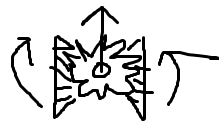
tl;dr: the “locking together” effect is relative to the power coming into the diff *and* to the rate of relative slip. The locking together is also *never zero*.
 RamblinRover Luxury-Yacht
> Rusty Vandura - www.tinyurl.com/keepoppo
RamblinRover Luxury-Yacht
> Rusty Vandura - www.tinyurl.com/keepoppo
02/21/2020 at 14:00 |
|
In a sequel response of sorts,
this would be a lot easier to explain with hand gestures, and a back and forth *short* answer/response dialog -
and I’m not even Italian.
“whiteboarding” in Paint only goes so far.
 Rusty Vandura - www.tinyurl.com/keepoppo
> RamblinRover Luxury-Yacht
Rusty Vandura - www.tinyurl.com/keepoppo
> RamblinRover Luxury-Yacht
02/21/2020 at 14:28 |
|
No, it’s good. I consider myself a fairly clever lad and this has not been an easy concept to wrap my head around. But I’m nearly there.
The little gears, in between the spiders, provide a pivot of sorts where the differential between the two sides can occur. And I suppose that if your right wheel spins in DRIVE, the left wheel would spin in REVERSE, no?
 RamblinRover Luxury-Yacht
> Rusty Vandura - www.tinyurl.com/keepoppo
RamblinRover Luxury-Yacht
> Rusty Vandura - www.tinyurl.com/keepoppo
02/21/2020 at 15:05 |
|
If you are in drive, the middle gear is going around. In the diagram, “forward” in an instantaneous sense. If the right wheel begins to spin while that happens, the left wheel will slow and stop in proportion to the right wheel going faster, until in the ideal bad case, the middle gear is going forward at x, the right axle is turning at 2x, and the left axle is turning... not at all.
This is what “tries to” happen, because as it drags both axles around, it is like (as you said) a balance between the two, and if one slips, the other will draw back. This is resisted somewhat by inertia.
Imagine that a piston is slowly rising up, and there is a rope strung over a pulley on the top, with a man holding onto either end:
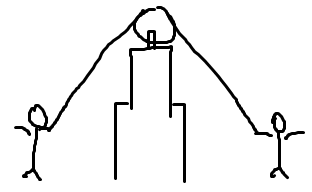
It must pick one or both up off the ground, and the lighter man will lift first. As he does, the heavy man will “ lift” to the limit of the lighter man’s weight , and no further. If the lighter man releases the rope, the tension on the heavier man will be... zero. If the lighter man ties his lunch pail to the rope and leaves, the tug on the heavy man will never be greater than one lunch pail - and the lunch pail, lighter man, or loose rope end will rise twice as fast as the piston.
Now imagine that there are two loads hanging from a pulley slowly raising them, and the rope runs through a friction block shared between both sides:
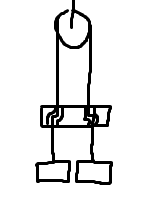
Any phallic qualities are accidental, I promise you. Got done and was rather annoyed, suddenly. I like my dickbutt/et al to be on purpose.
The friction block as shown is just a block with two thru-holes with a dogleg/kink in the rope to make it bind a little - the tighter the rope, the more resistance is shown to slipping through, and the more of an angle the friction block is pulled into by one dragging down, the tighter it gets on the other going up.
In this situation, the two weights can slip relative to one another... slowly, and when the changes/differences are small, and the weights light. If one weight gets heavier, it will increase the tension on the rope, and not only bind up more, but attempt to drag the block *down* the rope of its fellow, going up. If both weights get heavier or the pulley is jerked upward, the relative resistance to slipping will increase.
Say that one load is a bag of grain, and it leaks. The relative movement of the weights will increase until the movement causes the whole to *finish* binding up. At which point, the friction block will not let the one remaining bag free, and since the other side will not whip loose, it is safe for a crewman on the dock to grab the end or hook on a new bag.
This is as near to a perfect equivalent system as I can think of. The latent friction from the block present even with no loads is like the friction on the clutches from the preload spring, the relative increased resistance to movement of the rope through the block due to rope tension increasing is like the carrier spider gear driving the axles apart a little , and the change in dynamics when one goes up or down is like the tilting of the block.
If you can picture all this moving, and now just *understand* that something very similar (but round) is taking place in the LSD, you will possibly “get” what is going on better than before.
Also, obviously, in this analogy the rope and friction block wear out eventually.
 Rusty Vandura - www.tinyurl.com/keepoppo
> RamblinRover Luxury-Yacht
Rusty Vandura - www.tinyurl.com/keepoppo
> RamblinRover Luxury-Yacht
02/21/2020 at 15:12 |
|
Wanted: a massless monkey and a frictionless pully to perform an unnatural act.
 RamblinRover Luxury-Yacht
> Rusty Vandura - www.tinyurl.com/keepoppo
RamblinRover Luxury-Yacht
> Rusty Vandura - www.tinyurl.com/keepoppo
02/21/2020 at 15:53 |
|

Did that help?